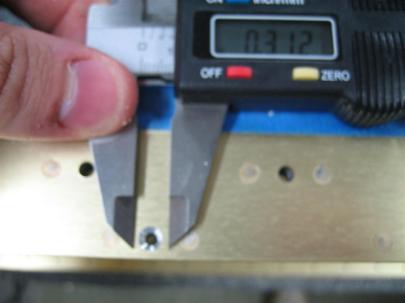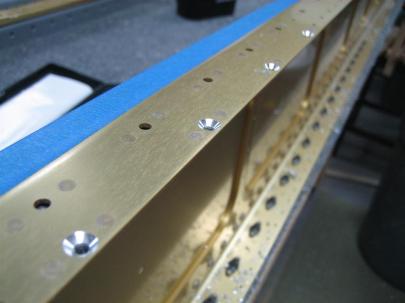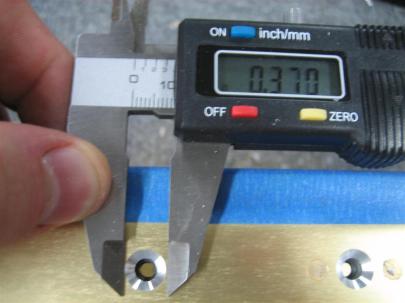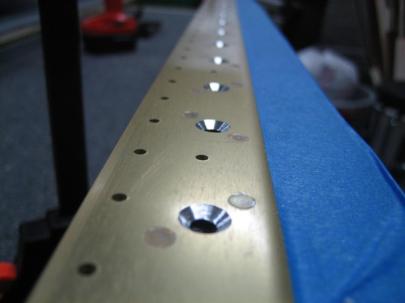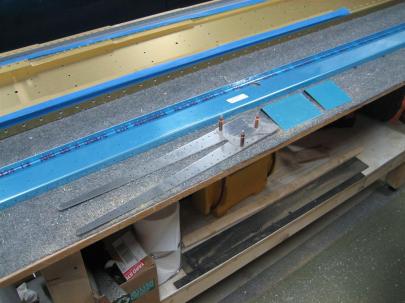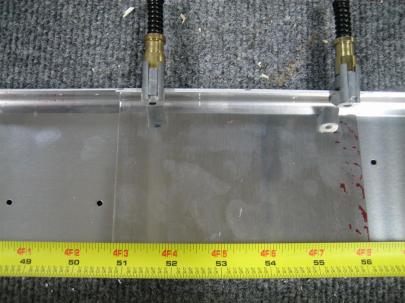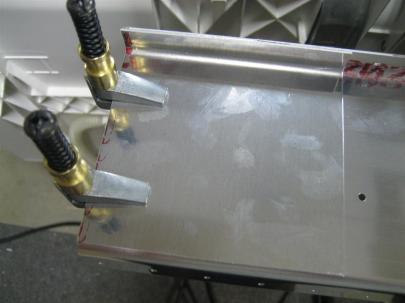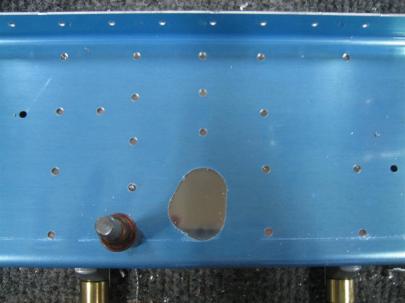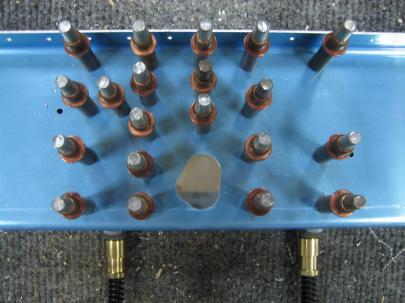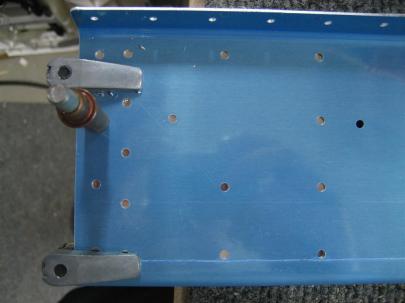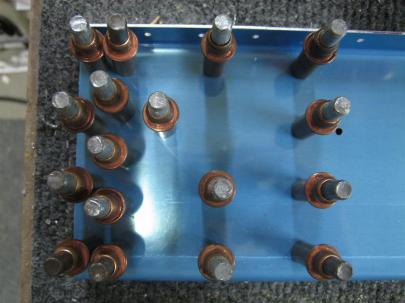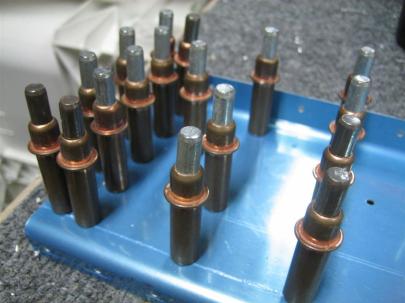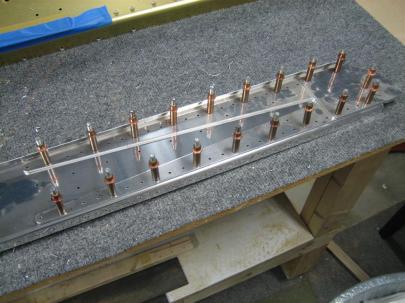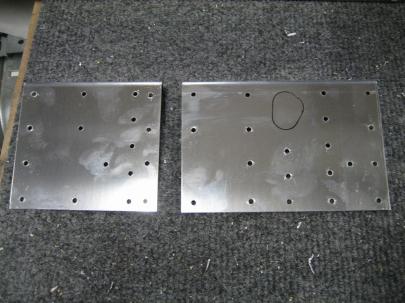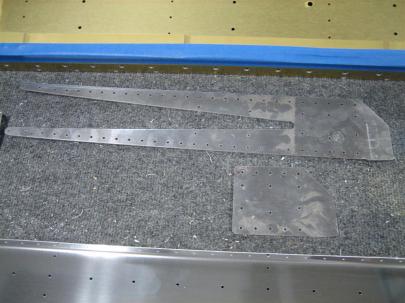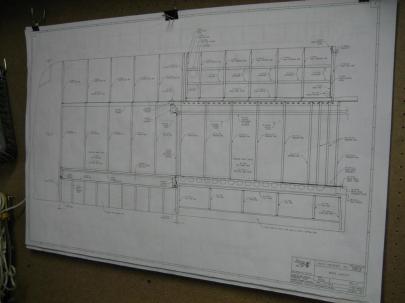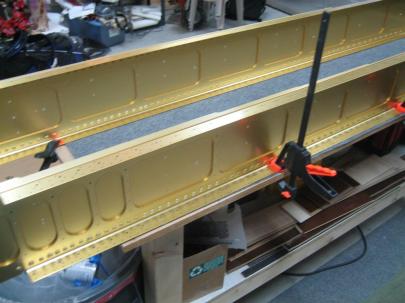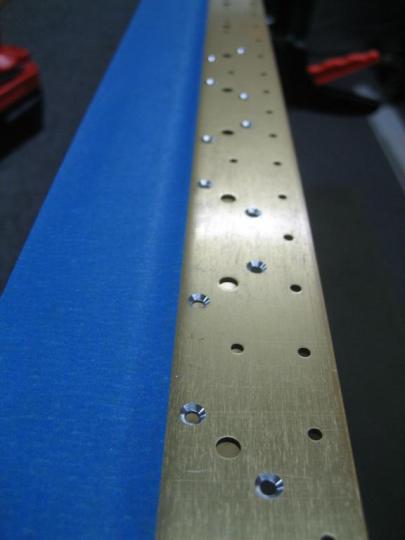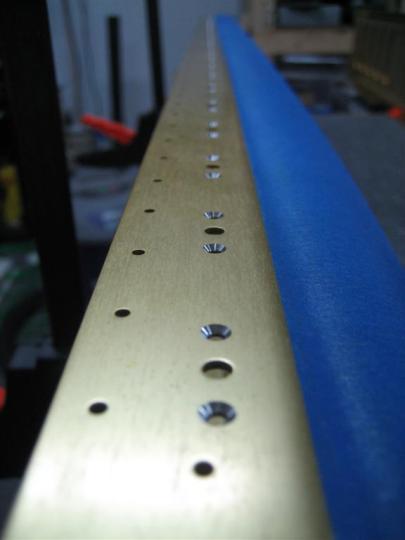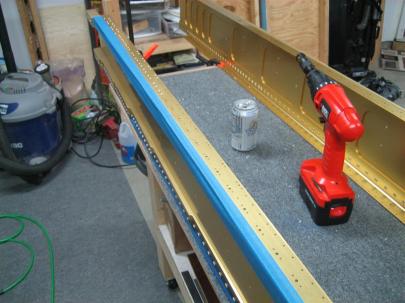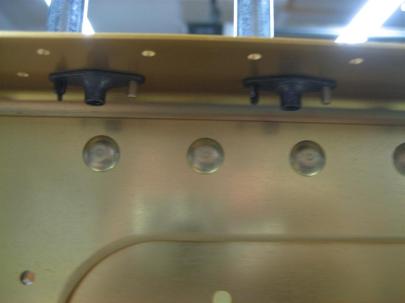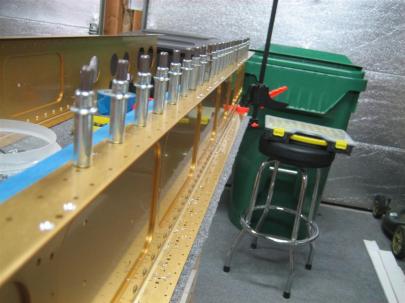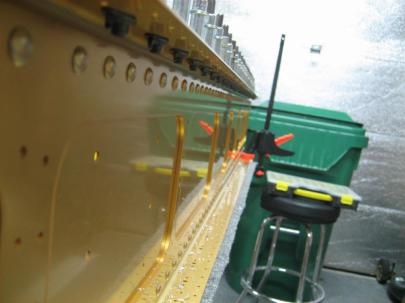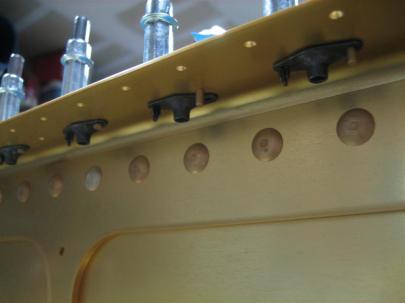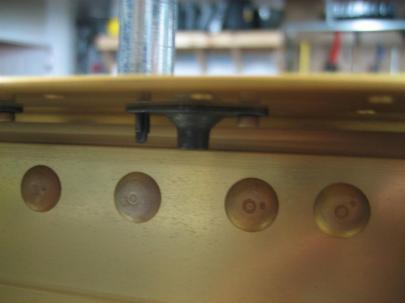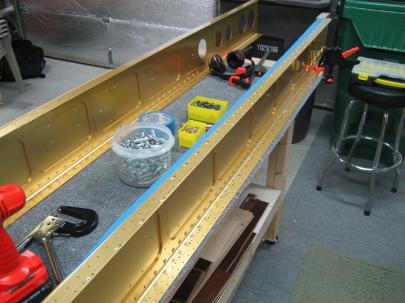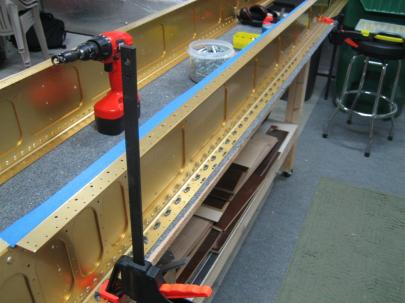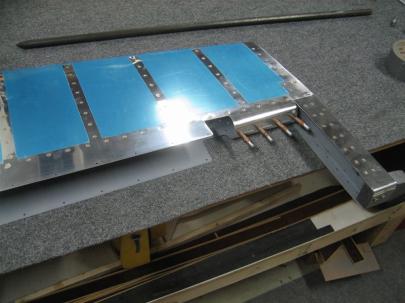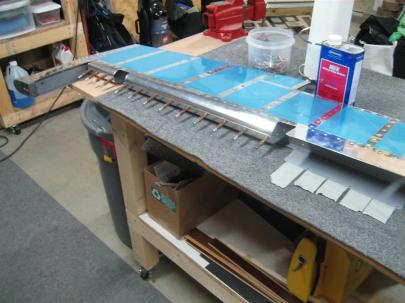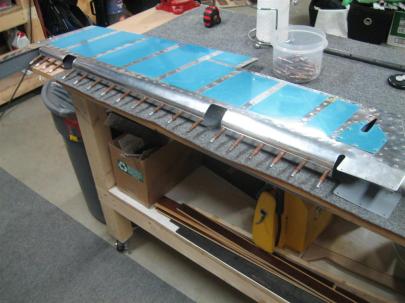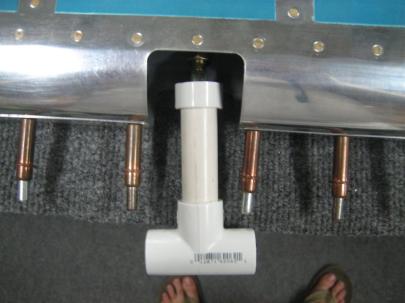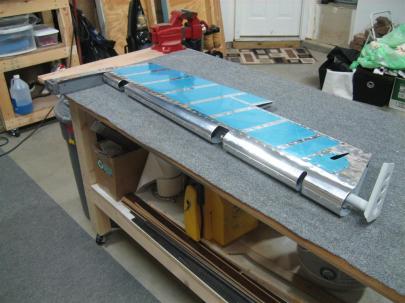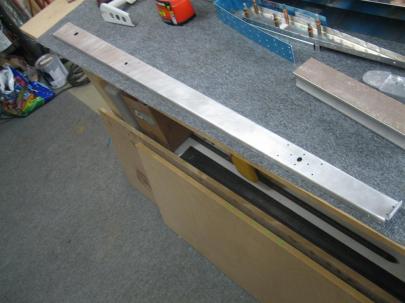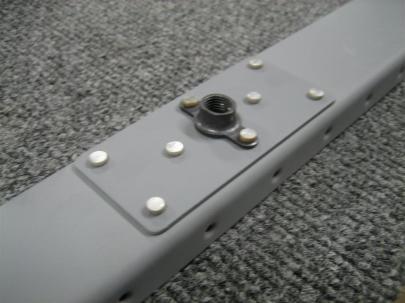Prev | Next
Well, I’d been waiting for a couple days for an order from Aircraft Spruce to come in. I ordered a whole bunch (~60) #6 screws and nutplates to use to attach the emp tips, and added a couple 1/4″ nutplates to attach to the elevator counterbalance spars so I can add more weight later for fine elevator balancing.
Here’s the deal. When you initially balance the control surfaces (without paint), you can either leave them a little heavy (which some do), or balance them exactly. Given that I might leave my empennage polished, I thought I would go ahead and balance them perfectly for first flight, then rebalance (pronounced “add weight”) after paint. While the forward tooling hole in the counterbalance ribs would work for a straight up bolt and nut, I’d prefer a nutplate. Also, since the two counterbalance ribs are butted against eachother, I’d prefer to drill for the nutplate now, so I can deburr both sides of both surfaces.
(I wonder how people deburr holes drilled through two permanently attached skins. Maybe just the inside and outside of the two skins and not the middle two surfaces?)
Anyway, here’s the order.

screws and nutplates.
Both size #6 screws in their new home.

I'll definitely be able to tell the difference between the two sizes.
Here are the 1/4″ nutplates. I bought one-lug because I thought the second lug might interfere with the An509 screw and nut used to attach the elevator counterweight. I’ll point it out again later.

MK2000-4 nuplates.
Then, some of the smaller MK2000-06 nutplates. I bought these for some of the tight locations on the emp tips.

I forgot to take a picture of the 60-odd 2 leg nutplates.
Okay, now on to real work. Here I am trying to figure out how to get this thing in a place where I can drill it. I don’t have any 1/4″ clecos, so I had to just eyeball it. That was a bad idea.

After one of the #40 holes drilled.

Here's the second hole drilled. You can see I had to enlarge the tooling hole to much bigger than 1/4" because I am lame and didn't have a 1/4" cleco to located the two attach holes. Lame me.
After taking those apart and deburring the holes, I scuffed everything up, leaving only the four rear-most holes on the E-703 End Rib. Again, I use the rivet in the hole into the countersunk steel bar trick.

Ready to flush rivet to form this dimple.

I have a 5/8" flush set, which comes in handy in some places.

Both done.
After cleaning those two ribs, I set them aside to dry before priming. Then, I moved on to the WD-605-R-1 Elevator Horn.

Let's see. AN470AD4-4 rivets. I might have some of those.
A small smiley on the lower left rivet, but according to the diagrams, it is okay.

6 nice rivets. The shop heads are very nice.

See? Told you.
Then I shot the six on the other side of the horn.

I love this new tungsten bucking bar.

6 more down.
Back to the paint booth.

E-703 End Rib and E-704 Counterbalance Rib being primed.
And now, a big pictures shot of the elevator horn on the skeleton.

It's starting to look like an airplane.
Then, I deviated from the plans (like many builders here.) It is easier to attach the E-704 Counterbalance rib to the spar if you don’t rivet it to the E-703 End rib first. I managed to massacre the left head, and the flange on E-704 didn’t sit flat against the skin on the other side.

Whoa. Take it easy, Andrew.

I don't like how the flange isn't flush with the spar web here.
Time to get the drill out.

Drilled first with #40, then #30 through the head only.

Pop the heads off.
Then re-set. This is a little better.

But not perfect. I think it's going to be good enough. I'd rather see them sitting perfectly flat, but the area around the rivet is sitting where it should be. It's just around the edges of the flange that are standing off a little.
Here are the new manufactured heads. Much better.

There we go. What's next?
Okay, now I need to attach the E-704 to E-703. Wait a minute! There is no rivet callout for these.

I see one for E-703 to E-702 and for E-704 to E-702. Where is the E-704 to E-703 callout? Well, I guess I'll just use AN470AD4-4 rivets.
Yikes.

The three upper middle rivets are all horrible. I can't figure out why the gun is jumping around so much.
Anyway, before drilling those out, I wanted to get that nutplate riveted on. Same deal here, though. I couldn’t figure out how to cleco it on for riveting.

Here are the two NAS1097 rivets ready to go.
I ended up shooting both of these at once. (How cool is that?)

NAS1097-4 (I think they are -4s)
I held the bucking bar on the other side and used my finger to hold the nutplate firmly against the web of the rib.

Is this a good method? No. Did it work? Yes.
Anyway, in the above picture, you can see one of the three rivets that I botched. After drilling all three out, I reset 2 successfully, but messed up this one again.

Grrr. It didn't really bend over, but it kind of shifted to one side.
Drilled it out, then did the exact same thing. This is the third time I’ve drilled out a rivet on this hole.

Grrr.
I figured out that during the first try, I had bent the rib web a little, so the rivet was pre-inclined to lean. I took my tungsten bucking bar and my 5/8″ flush set (without a rivet) and got everything flattened out again. Next try, the rivet set well.

Top middle rivet. Much better.
Finally, an upside down picture of the right elevator skeleton.

Tomorrow, I'll get back to work on the skin. Maybe this weekend I'll have an elevator!
2 hours, 26 rivets. 5 drilled out (3 of those was one hole!)
Prev | Next













 Posted by Andrew
Posted by Andrew 




















